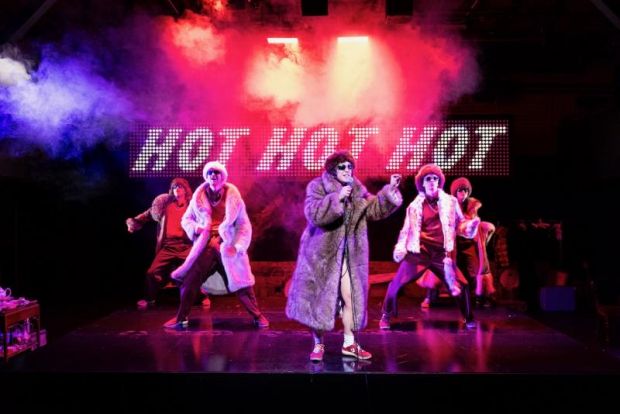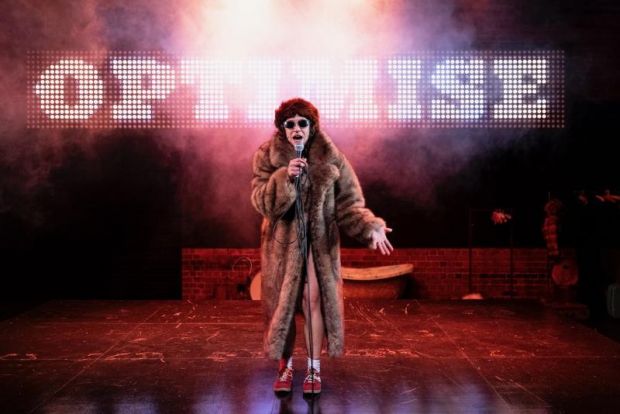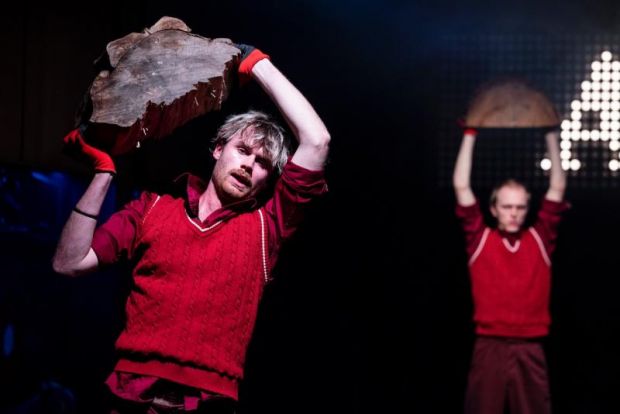The Orchard
The Orchard is loosely based on or inspired by Chekhov’s iconic play, The Cherry Orchard by Pony Cam which is an award-winning experimental theatre collective. Subversion, innovation, audience participation and challenging expectations are all characteristic of their work. An adaptation to such a classic text from an experimental theatre perspective sets up an interesting challenge. From the outset the company makes it clear that this show strips back the play, uses none of its text, abandons any of its realism and seeks to tease out what they see as its important themes of inaction, procrastination and the loss of agency this produces in the face of impending doom. This opens up the text and allows it to be about almost any contemporary issue: geopolitical conflicts, environmental disasters or declining social services.

In this show there is no story, just the burning question of what they are going to do about the orchard. While the performance preserves the idea of a valuable orchard facing destruction it is not necessarily a cherry orchard and much of the musings and ruminations could be applied to almost any contemporary context. At times, especially when the performers outline the dire financial operations of the orchard, they could just as easily be talking about the current state of the Arts, the cost-of-living crisis, or corrupt capitalism and the systematic dismantling of democracy. In this sense the approach is ingenious.

The performance style is eclectic, humorous, bizarre and often bordering on the absurd. The delivery is somewhat loose to allow for improvisation and spontaneity, and this adds a very fresh and raw approach to its theatricality. Co-creators and performers Claire Bird, Ava Campbell, William Strom, Dominic Weintraub, Hugo Williams all deliver their lines with comic expertise, often deploying deadpan expressions and dramatic pauses with precision and efficiency. This generates a great deal of the humour as the ominous and inevitable end approaches. The finale is exceptional although the route to this exciting climax can be somewhat laborious. This can make the pace of the show somewhat stagnant, and this is perhaps its strongest homage to the original play.

Recruiting audience members to be a part of the show is conducted in a novel way and allows the performance to add a layer of detail and nuance to frame the text and the visuals. The set and costume design (Sophie Woodward) has cohesion but also has a makeshift quality that echoes the theatrical disorder that ensues. The lighting design (Harrie Hogan) effectively creates the varying ambiences. The mood is sometimes soothing and calm and at other times loud and disruptive and the performers weave in and out of these different states, often to the delight of the audience.
Describing this production as an adaptation would be stretching the definition of this term. Instead, the show aims to conduct a fascinating exploration of resistance to change and the imminence of social conditions that simultaneously urge and obstruct a requalification of society.
Patricia Di Risio
Photographer: Pia Johnson
Subscribe to our E-Newsletter, buy our latest print edition or find a Performing Arts book at Book Nook.

